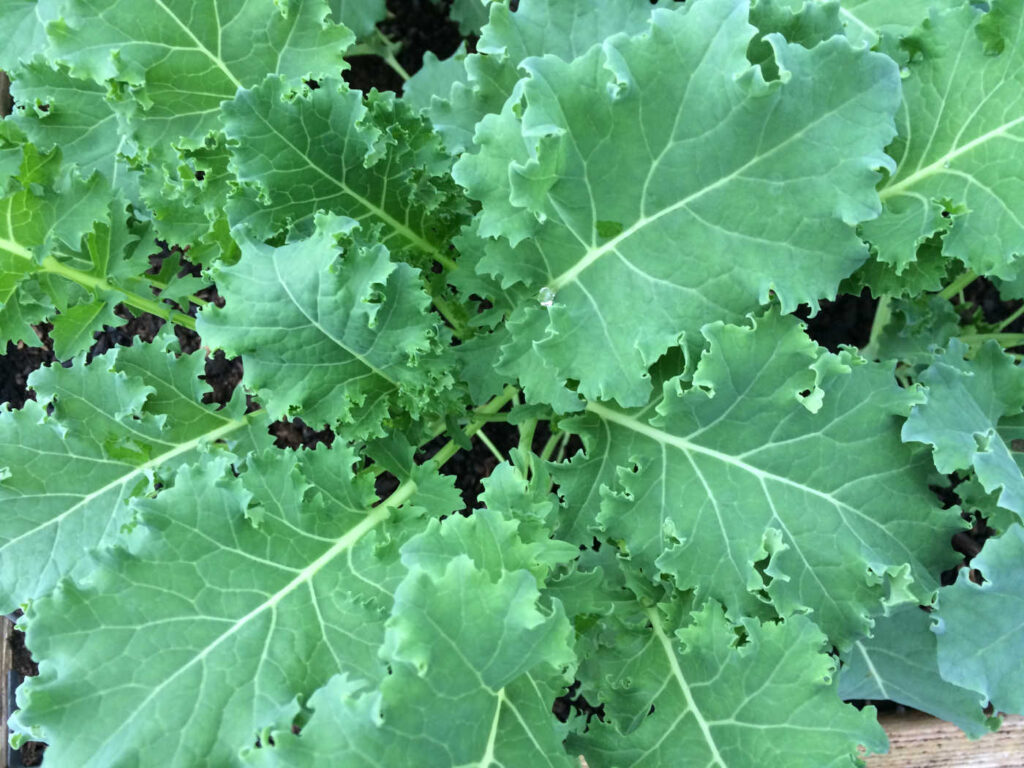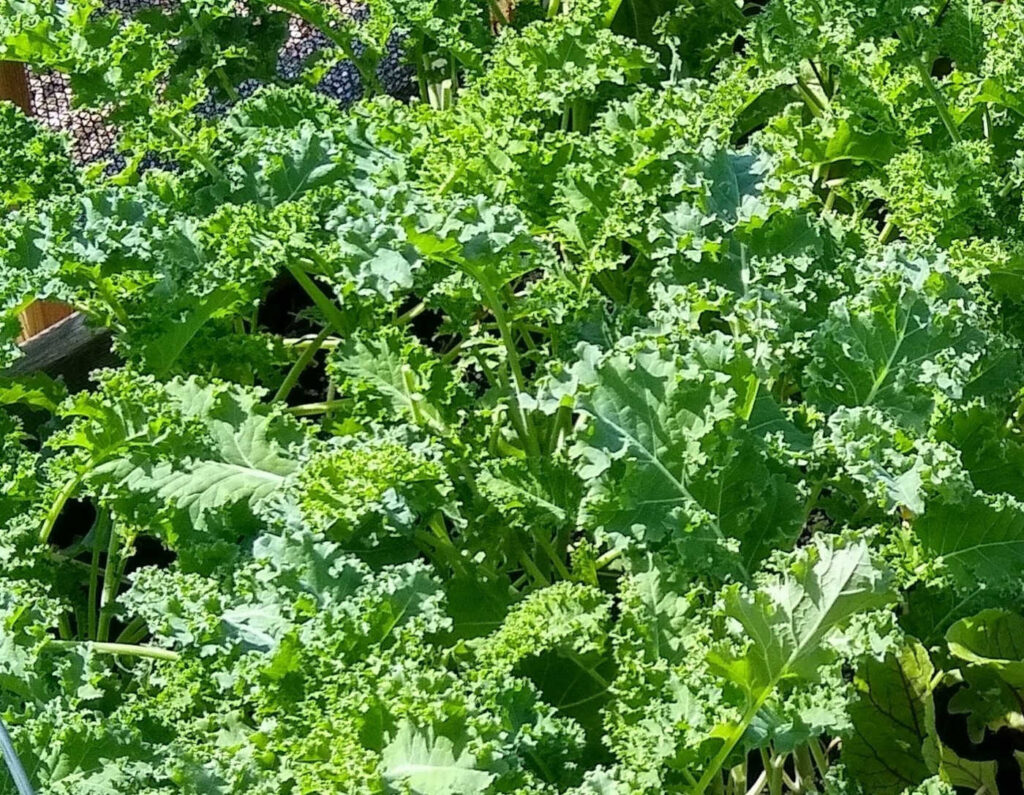Ahhh, kale. Some folks just love this crunchy, vitamin-packed green. Others loathe it. And, there’s a group that feels “meh” about it, but when prepared well, it gets a thumbs up.

Growing the green
Kale is in the brassica family along with cabbage, broccoli, cauliflower and Brussels sprouts. They all have a similar flavor, and most grow well in cooler or partly shaded/protected areas.
Here in Zone 5, growing kale is usually pretty easy. Once the soil temperature has risen to at least 60 degrees Fahrenheit, loosen the soil several inches deep where you want to plant. Then, make a row approximately ½ inch deep. Drop seeds about 8 inches apart for a large crop of early kale that will need to be thinned after the first couple of thorough harvests or at about 12 inches for long season plants.
Keep it watered
Lightly cover the seed row with the disturbed soil and lightly pat to ensure good seed-to-soil contact. Lightly water over the seed row several times to get an even amount of water gently applied to the seeds. The intent is to evenly water to at least ½ inch below the seeds, but do it gently to not shift the seeds out of their planted location. Kale has simple requirements for good germination. The seeds must be kept moist (not soggy) and there should be moderate air and soil temperatures. Spring and fall here in Zone 5 are perfect times to seed kale with cooler, more consistent air and soil temperatures.
After your kale sprouts, keep the area moist, but now you should water at the base of the plants, not directly over and onto them. Monitor for strong, sturdy stems. If it is windy or your rainfall has been hard and the plants need help standing, use a hoe along both sides of the row to lightly hill soil at the base of the plants to help support them. This will help while the plants continue to grow stronger stems.
Feed them
Apply a good compost to the side of your kale plants after your first hard picking and then every 2-3 weeks, watering it in well. This will help give your plants the boost that they need to rebound with new leaves more quickly. If your plants are too large and growing together, your best options are to either pick every other plant thoroughly, going back to the full plants for the next picking or simply pick and pull every other plant. Kale grows fast and can be reseeded through most of the season.

Pick and pick, and pick some more
Pick your kale often to keep it growing through the season. If your plants fizzle in the heat of summer, you should plan to reseed or start more seeds in trays or small containers for a later harvest after the high heat has passed.
If your family are kale eating machines, you could just plan to start a second planting near the end of June. Use your flats or small containers so you have the ability to move them to the ideal location. Keep them moist and move them to a partly sunny location after germination. Based on the time of year, bottom watering from a tray will probably be your best way to keep them from drying out. When there are 2 sets of true leaves on the plants, find them a spot in the garden. Again, try to plant them where they will get protection from the hottest time of day, if possible.